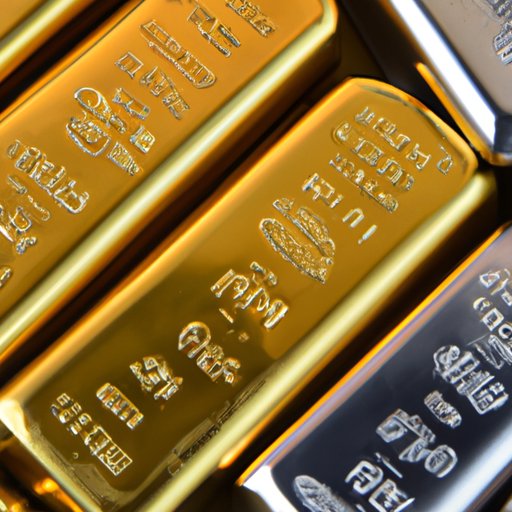
Introduction
Investing in gold and silver is becoming increasingly popular, but for beginners, the process can seem daunting. With so many options and the potential for scams, knowing how to buy gold and silver can be a challenge. This article aims to provide a comprehensive guide for beginners, covering everything from the basics of investing in precious metals to how to store your investments and minimize taxes.
How to Invest in Gold and Silver: A Beginner’s Guide
Before you start investing in gold and silver, it’s important to understand your options. These include physical metal, exchange-traded funds, mining stocks, and futures contracts. Each has its own set of advantages and disadvantages, and it’s important to evaluate risk before committing to any investment. When choosing the right investment for your portfolio, consider factors such as price volatility and storage costs.
The Pros and Cons of Investing in Gold and Silver
There are many benefits to investing in precious metals, including inflation protection, portfolio diversification, and stability during times of economic uncertainty. However, there are also some drawbacks to consider, such as the potential for price volatility and storage costs. It’s important to weigh these factors and consider the liquidity of your investment before getting started.
How to Spot Fake Gold and Silver
Unfortunately, counterfeit precious metals are a common problem in the industry. The good news is that there are ways to identify fake gold and silver, such as using a magnet or performing a specific acid test. It’s also important to be aware of common scams, such as overpriced coins or fake certificates of authenticity. Knowing how to spot fake gold and silver can save you from a costly mistake.
The Best Places to Buy Gold and Silver
When it comes to buying gold and silver, it’s important to choose a reputable dealer or online retailer. Look for dealers who have been in business for a long time and have a good reputation in the industry. Online retailers should offer secure payment options and fast, reliable shipping. It’s also important to compare pricing and customer service before making a purchase.
Gold vs. Silver: Which is a Better Investment?
Gold and silver have some similarities as investments, but there are also unique advantages and disadvantages to each. For example, silver is often considered more volatile than gold, but it can also offer more upside potential. Historical price patterns and supply and demand factors can also play a role in deciding which metal to invest in. It’s important to do your research before choosing which precious metal to add to your portfolio.
How to Store Gold and Silver
When you invest in physical gold and silver, storage is an important consideration. Some investors choose to store their metals at home in a safe or hidden location, while others use a secure storage facility. It’s important to take precautions against theft and damage, such as insuring your metals and using tamper-evident packaging.
Tax Implications of Investing in Gold and Silver
Finally, it’s important to understand the tax rules for buying and selling precious metals. Depending on the type of investment and your location, taxes can vary. For example, in the United States, gains on physical precious metals may be subject to a higher tax rate than other investments. It’s important to consult with a tax professional to minimize taxes and maximize returns.
Conclusion
Investing in gold and silver can be a smart addition to your portfolio, but it’s important to do your research and understand the risks before getting started. By knowing how to evaluate options, spot fake precious metals, choose a reputable dealer, and store your investments, you can make informed decisions and protect your assets. With proper planning and strategy, investing in gold and silver can be a valuable addition to your investment portfolio.





